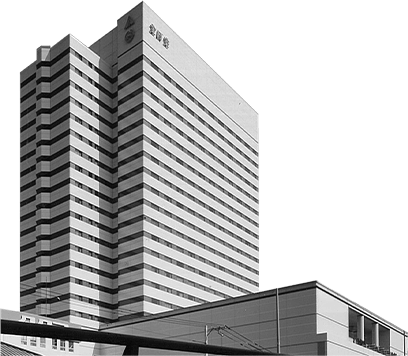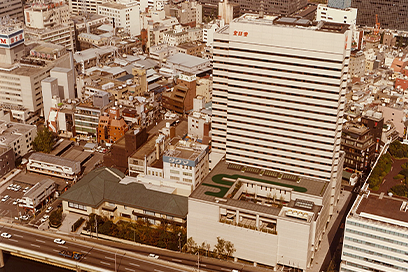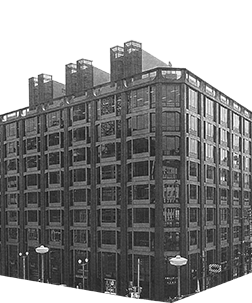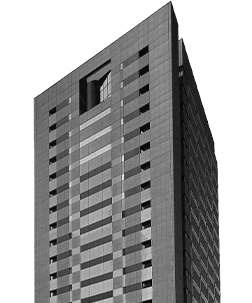 05
1984
05
1984
Osaka
The Dojima Daibiru Building
Construction of Our First Hotel Through a Pioneering Application of Air Rights
Negotiating Air Rights with Club Kansai
At first, Club Kansai was not receptive to Daibiru’s ambitions. Initially, Daibiru asked Club Kansai if the club would give them some of their land, but those negotiations ran into difficulties. The next-best solution was that Club Kansai would build a two-story clubhouse, and Daibiru would acquire the air rights for everything from the third floor up. An agreement was reached after more than two years of negotiations, thanks to Daibiru’s persistent negotiations involving their management team at the time as well as government agencies.
In August 1981, Daibiru exchanged a memorandum of understanding for joint land development with Club Kansai. On the basis of that memorandum, an air rights agreement was signed. The details of the agreement were as follows.
- Daibiru receives air rights for 2,722 m2 of land belonging to Club Kansai.
- The upper and lower air rights range is from O.P. 20 m to O.P. 50 m.
- On the basis of those air rights, the maximum allowable capacity for the building to be built by Daibiru is 13,690 m2.
- The consideration paid for the air rights shall be 1.26 billion yen, which is equivalent to 50% of the land value.
- The air rights agreement term shall be 65 years starting October 1, 1982, and if Daibiru’s building continues to exist beyond that term, then discussions for renewing the term shall take place.
-

Construction of a 23-story hotel made possible through air rights
In parallel with these negotiations, Daibiru made a proposal to Club Kansai, which was thinking about rebuilding its clubhouse, to provide a shared open space for joint development and integrated design. Club Kansai accepted this proposal. Daibiru and Club Kansai also reached an agreement on the use of Club Kansai's underground parking lot, which was connected to the hotel’s underground parking lot, and the acquisition of Club Kansai's air rights.
The agreement enabled Daibiru to construct a 23-story hotel with a total floor area of 44,700 m2 and 500 rooms, while Club Kansai was able to renovate its clubhouse. Due to the stipulation that both buildings must be integrated, a passageway connecting their second floors was built.
As members of Club Kansai who observed the proceedings related to Daibiru’s air rights acquisition proudly remarked, “In the end, both the club and the hotel benefited. Such is the wisdom of Osaka merchants.”
-
1927 1931 Hibiya Daibiru Buildings
No. 1 and No. 2 -
2007 International Operations
-
- An Unexpected Discovery of a Good Property
- Mutual Trust and a Long-Term Perspective as Points of Agreement
- The Acquisition of a Property in Hanoi Through Unity of Philosophy
- Implementing Daibiru Quality Through Building Renovations
- Challenges in Australia, Our Second Overseas Expansion Target
- The Discovery of 275 George Street
- Difficult Contract Negotiations with JHG
- Overcoming Several Unexpected Difficulties
-



